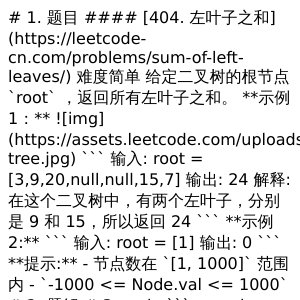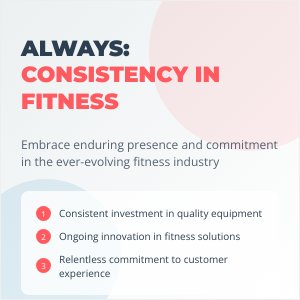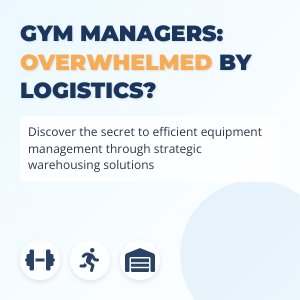
Okay, here’s a summary of the article, aiming for approximately 160 words:
---
Gym managers often struggle with the logistical nightmare of managing a constantly rotating inventory of fitness equipment. This article, “Gym Managers: Overwhelmed by Logistics? Always Need Equipment Efficiently – The Secret: Strategic Warehousing,” reveals how poor equipment management – leading to lost productivity, increased downtime, safety hazards, and wasted space – can significantly impact a gym’s success. The solution? Strategic warehousing.
This approach focuses on creating a comprehensive system for storing, organizing, and tracking all equipment, from free weights to cardio machines and spare parts. Key elements include vertical storage, designated zones, clear labeling, and utilizing inventory management systems, ranging from spreadsheets to dedicated WMS software. Implementing a strategic warehousing system improves equipment availability, reduces repair times, enhances safety, and optimizes space.
The article provides actionable steps, including conducting an inventory audit, developing a workflow analysis, and training staff on proper procedures. By investing in a well-planned warehouse, gym managers can transform a complex challenge into a competitive advantage and ultimately, a more efficient and profitable operation.
---
Would you like me to adjust this summary based on any specific preferences you have?
Learn More >>
你写的摘要内容
This article addresses a growing challenge for personal trainers: losing clients due to slow equipment delivery. It highlights how delays disrupt training plans, frustrate clients, and ultimately lead to churn and damage a trainer’s reputation. The piece identifies the root causes of these delays – including global supply chain issues, shipping carrier challenges, and lack of transparency from suppliers – and proposes a solution: prioritizing express shipping. By emphasizing the benefits of expedited delivery – consistent training, increased client satisfaction, reduced cancellations, and enhanced professionalism – the article argues that investing in express shipping is a crucial step for personal trainers seeking to retain clients and build a thriving business. It also offers practical advice on selecting the right shipping partner and suggests proactive equipment management strategies like anticipating client needs and diversifying suppliers. A case study demonstrates how one trainer successfully implemented express shipping, resulting in improved client retention. Ultimately, the article stresses the importance of reliable equipment delivery as a key differentiator in the competitive fitness industry, urging trainers to invest in a solution that prioritizes speed and client satisfaction.
Learn More >>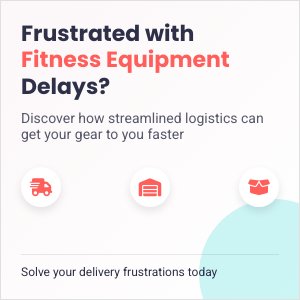
.
---
**Summary:**
This article addresses the frustrations faced by fitness enthusiasts due to delays in receiving their new equipment. It highlights the various factors contributing to these delays, including global supply chain disruptions, increased demand, complexity of equipment, and challenges in the “last mile” delivery. The article emphasizes that logistics are a key driver of customer satisfaction and proposes solutions such as strategic warehousing, inventory optimization, advanced technology implementation, and partnerships with reliable third-party logistics providers. Ultimately, it argues that streamlined logistics are essential for improving the overall experience and reducing frustration for fitness enthusiasts seeking to quickly access their desired equipment.
---
Learn More >>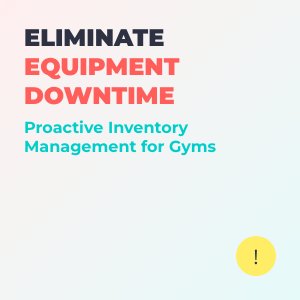
你写的摘要内容
Gym owners frequently struggle with costly and disruptive equipment downtime, impacting member satisfaction and profitability. This article addresses this critical issue, arguing that reactive maintenance is unsustainable and advocating for a proactive inventory management system. It highlights the significant hidden costs of downtime beyond lost revenue, including member dissatisfaction, class cancellations, trainer productivity loss, and increased repair expenses. The piece details how proactive inventory management – encompassing equipment tracking, preventative maintenance schedules, parts management, and leveraging technology – can dramatically reduce downtime, lower repair costs, and extend equipment lifespan. It outlines a step-by-step guide to implementing this system, emphasizing the importance of assessment, staff training, and ongoing review. Ultimately, the article stresses that investing in proactive inventory management is an investment in a more efficient, profitable, and member-focused gym business. SEO suggestions and internal/external linking opportunities are included to maximize the article’s visibility and authority.
Learn More >>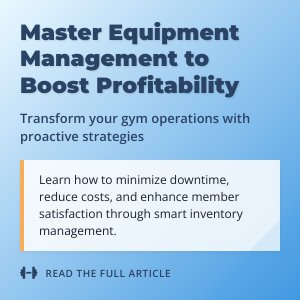
Gym Owners: Tired of Downtime and Constant Equipment Needs? Unlock Efficiency with Proactive Inventory Management.
Running a successful gym demands juggling numerous priorities – member acquisition, retention, scheduling, and creating a motivating environment. However, a significant drain on profitability and member satisfaction is often overlooked: equipment downtime. From broken treadmills to malfunctioning machines, these interruptions lead to lost revenue, frustrated members, and reputational damage. Many gyms operate reactively, scrambling to fix issues after they arise, a costly and inefficient approach.
This article explores the high costs of equipment downtime – lost revenue, member churn, increased maintenance expenses, and staff frustration – and introduces proactive inventory management as the solution. By implementing a detailed equipment tracking system, preventative maintenance schedules, parts inventory, and usage data analysis, gym owners can anticipate needs, minimize disruptions, and ensure they’re always equipped to deliver a top-tier fitness experience.
Section 1 details the tangible financial impact of downtime, while Section 2 defines proactive inventory management and its key components. Section 3 provides a step-by-step guide to implementation, emphasizing the importance of choosing the right tools and training staff. Finally, Section 4 showcases the significant return on investment (ROI) achievable through this strategic approach, highlighting reduced downtime, lower maintenance costs, and improved member retention.
Investing in proactive inventory management isn’t just about keeping equipment running; it’s about building a thriving, profitable gym. Take control of your operations and transform your business today.
Learn More >>
你写的摘要内容:
This article argues that embracing variety is crucial for creating engaging content and overcoming creative stagnation. It highlights how relying on repetitive phrasing, angles, and pain points leads to audience fatigue, decreased engagement, and writer’s block. The core message is that shifting your approach – through diverse phrasing, content formats (blogs, videos, infographics, etc.), topics, and tones – is key to capturing audience attention and achieving marketing goals. Strategies for injecting variety include content audits, brainstorming, audience research, and experimenting with different perspectives. The piece emphasizes the importance of diversifying content formats, exploring new topics, and varying tone and style to cater to different learning preferences and maintain audience interest. Ultimately, the article positions variety as a strategic tool for elevating content and boosting brand recall. It concludes by urging content creators to prioritize variety as a vital component of a successful content marketing strategy, offering suggestions for customization and SEO optimization.
---
Learn More >>
,
---
你写的摘要内容:
随着人工智能(AI)技术的快速发展,内容创作的定义正在发生转变。这篇文章探讨了如何利用AI工具,同时避免重复,并构建于之前的成功经验之上,以应对这一不断变化的环境。内容创作不再是单纯的机器生成,而是人与AI的协作,需要深入理解用户需求,并结合品牌特色。文章重点介绍了如何分析之前的成功内容,利用AI工具进行创意发想、关键词研究、内容提炼和内容再利用。同时,强调了在内容策略中,要关注用户意图,打造核心内容,并制定内容日历,以确保内容质量和一致性。最终目标是,在拥抱AI技术的同时,保持内容的真实性和价值,从而在竞争激烈的数字时代获得成功。
---
Learn More >>
你写的摘要内容
This article argues that focusing on a single topic – creating “deep dive” content – is now essential for successful SEO. Google prioritizes user intent and content quality, and topic authority is at the core of high-ranking content. It details how Google’s algorithms, including E-A-T (Expertise, Authoritativeness, Trustworthiness), semantic search, and the Knowledge Graph, reward comprehensive subject coverage. The piece outlines the benefits of deep dive content, such as increased organic traffic, improved user engagement, and enhanced brand authority, alongside strategies for keyword research, building topic clusters, and creating compelling content with actionable advice. Key elements include understanding topic authority, utilizing tools like Google Keyword Planner, and implementing best practices for readability and technical SEO. Finally, the article emphasizes measuring success through keyword rankings, organic traffic, and backlinks, concluding that topic authority is the future of SEO. Crucially, it highlights the need for specific internal and external linking, image optimization, and regular content updates for maximum SEO effectiveness.
Learn More >>


